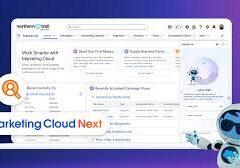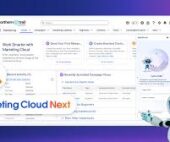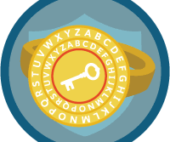Which Agentic AI Features Truly Matter?
Modern large language models (LLMs) are often evaluated based on their ability to support agentic AI capabilities. However, the effectiveness of these features depends on the specific problems AI agents are designed to solve.
The term “AI agent” is frequently applied to any AI application that performs intelligent tasks on behalf of a user. However, true AI agents—of which there are still relatively few—differ significantly from conventional AI assistants.
This discussion focuses specifically on personal AI applications rather than AI solutions for teams and organizations. In this domain, AI agents are more comparable to “copilots” than traditional AI assistants.
What Sets AI Agents Apart from Other AI Tools?
Clarifying the distinctions between AI agents, copilots, and assistants helps define their unique capabilities:
- AI copilots handle routine tasks, identify issues, and offer concrete solutions to users.
- AI agents operate with a broader scope than copilots, demonstrating greater autonomy and interacting more extensively with the external environment rather than just the user.
AI Copilots
AI copilots represent an advanced subset of AI assistants. Unlike traditional assistants, copilots leverage broader context awareness and long-term memory to provide intelligent suggestions. While ChatGPT already functions as a form of AI copilot, its ability to determine what to remember remains an area for improvement.
A defining characteristic of AI copilots—one absent in ChatGPT—is proactive behavior.
For example, an AI copilot can generate intelligent suggestions in response to common user requests by recognizing patterns observed across multiple interactions. This learning often occurs through in-context learning, while fine-tuning remains optional. Additionally, copilots can retain sequences of past user requests and analyze both memory and current context to anticipate user needs and offer relevant suggestions at the appropriate time.
Although AI copilots may appear proactive, their operational environment is typically confined to a specific application. Unlike AI agents, which take real actions within broader environments, copilots are generally limited to triggering user-facing messages. However, the integration of background LLM calls introduces a level of automation beyond traditional AI assistants, whose outputs are always explicitly requested.
AI Agents and Reasoning
In personal applications, an AI agent functions similarly to an AI copilot but incorporates at least one of three additional capabilities:
- Autonomy – AI agents can operate independently of direct human input. Most AI agents today are semi-autonomous, meaning they act independently within defined constraints. Human oversight serves as a form of tool usage, making semi-autonomous agents functionally similar to fully autonomous systems.
- Environmental Interaction – AI agents perceive and respond to their designated environment using sensors. For example, OpenAI’s Operator incorporates screenshot-based vision for web browsing. Additionally, agents can take actions using tools, such as clicking buttons on websites or interacting with applications within a browser or operating system.
- Goal-Oriented Behavior – AI agents pursue high-level objectives by formulating strategic plans and breaking down goals into actionable tasks.
Reasoning and self-monitoring are critical LLM capabilities that support goal-oriented behavior. Major LLM providers continue to enhance these features, with recent advancements including:
- DeepSeek R1, emerging as a strong competitor in reasoning tasks.
- Google’s Gemini 2.0 Flash Thinking, introducing new AI reasoning capabilities.
- xAI’s Grok 3, a model designed with enhanced reasoning capabilities.
- Anthropic’s Claude 3.7 Sonnet, a hybrid model allowing reasoning to be adjusted via a configurable budget.
As of March 2025, Grok 3 and Gemini 2.0 Flash Thinking rank highest on the LMArena leaderboard, which evaluates AI performance based on user assessments. This competitive landscape highlights the rapid evolution of reasoning-focused LLMs, a critical factor for the advancement of AI agents.
Defining AI Agents
While reasoning is often cited as a defining feature of AI agents, it is fundamentally an LLM capability rather than a distinction between agents and copilots. Both require reasoning—agents for decision-making and copilots for generating intelligent suggestions.
Similarly, an agent’s ability to take action in an external environment is not exclusive to AI agents. Many AI copilots perform actions within a confined system. For example, an AI copilot assisting with document editing in a web-based CMS can both provide feedback and make direct modifications within the system.
The same applies to sensor capabilities. AI copilots not only observe user actions but also monitor entire systems, detecting external changes to documents, applications, or web pages.
Key Distinctions: Autonomy and Versatility
The fundamental differences between AI copilots and AI agents lie in autonomy and versatility:
- AI copilots lack full autonomy but exhibit proactive behavior within a constrained system. They excel at assisting users with specific tasks within a single platform, such as document editing or product selection within a marketplace.
- AI agents operate autonomously, generating new tasks as needed to achieve broader objectives. They are designed for versatility, functioning across multiple systems, engaging with other users, and even collaborating with other AI agents.
If an AI system is labeled as a domain-specific agent or an industry-specific vertical agent, it may essentially function as an AI copilot. The distinction between copilots and agents is becoming increasingly nuanced.
Therefore, the term AI agent should be reserved for highly versatile, multi-purpose AI systems capable of operating across diverse domains. Notable examples include OpenAI’s Operator and Deep Research.













